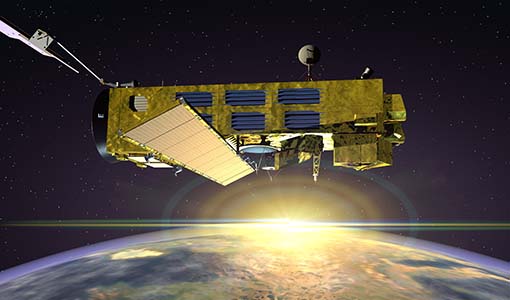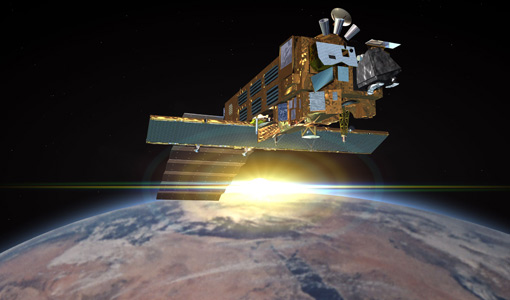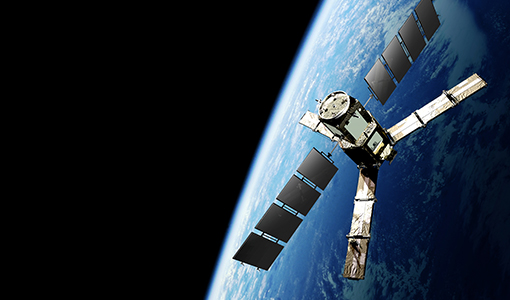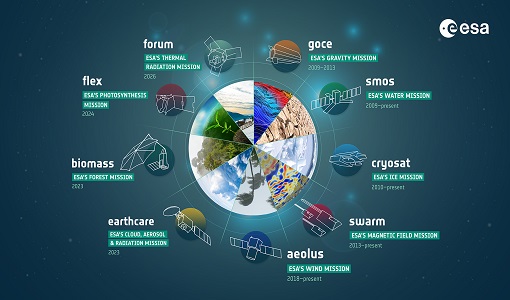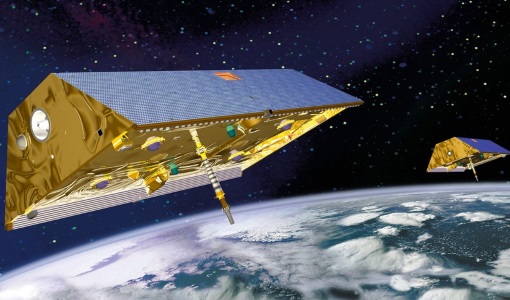- All Categories (15)
- News (6)
- Missions (2)
- Events (2)
- Tools (4)
- Documents (1)
News - Operational News
SMOS Winds Product data gap recovery
From 28 January 2024 to 9 February 2024, several Level 1 products used as an input to the SMOS winds processor were flagged with a warning.
News - Operational News
Temporary interruption to Envisat AATSR dissemination service
A planned downtime will affect the access to the ftp dissemination server for the Envisat AATSR data during the period 13-15 February 2024.
News - Thematic area articles
Satellites expand research on Space Weather and Sun-Earth Interactions
Earth observation data provide vital warnings about the impact of solar activity and strive to unravel the influence the Sun has on Earth’s system.
Event - Conference
Living Planet Symposium 2022
Learn about the 2022 edition of ESA's Living Planet Symposium.
News - Events and Proceedings
Data preservation takes centre stage at Living Planet Symposium
Against the backdrop of the famed Rhine River, world-class scientists and Earth observation data-users are gathered this week in the historical city of Bonn, at the Living Planet Symposium (LPS).
News - Success Stories
How Envisat helped to shape global understanding of Earth’s systems
Twenty years have passed since a ground-breaking European spacecraft designed to deliver unprecedented insight into the planet’s changing environment was lofted into orbit.
Event - Workshop
Fringe 2003 Workshop
The third ESA International Workshop on ERS SAR Interferometry and its first Workshop on ASAR interferometry: Advances in SAR interferometry from ERS and Envisat missions.
Tools - Apps
Heritage Missions app for Android
Download the Heritage Missions application to discover what the missions were about, how it worked and what the elements of the space and ground segment that make these missions unique.
Mission - Heritage Missions
Envisat
Envisat was ESA's successor to ERS. Envisat carried ten instruments aboard for a wide range of Earth observing fields. The mission was operational from 2002 to 2012.
Document - General Reference
Reports from Mission Selection - The Four Candidate Earth Explorer Core Missions
The Living Planet Programme document (ESA SP-1227, available on this Library) describes the plans for the Agency's new strategy for Earth Observation in the post-2000 time frame. Out of the nine Earth Explorer Core Missions identified in 1996, four Core Missions were selected for Phase-A studies, which began in 1998, namely: the Gravity Field and Steady-State Ocean Circulation Mission; the Land-Surface Processes and Interaction Mission; the Earth Radiation Mission; and the Atmospheric Dynamics Mission. The 4 volumes forming this Special Publication describe in detail each single mission.
Tools - Analysis
RWAPI
The Read-Write Application Programming Interface tool can be used to read, extract and write information from any kind of SMOS Level 1 or Level 2 soil moisture and sea surface salinity data products in Matlab.
Tools - Processing
SMOS Toolbox
SMOS Toolbox for SNAP (SMOS-Box) supports those using data acquired by ESA’s Soil Moisture and Ocean Salinity (SMOS) mission.
Tools - Analysis
SMOS Comparison Tool
SMOS Comparison Tool (SCoT) software can be used to produce comparison plots, statistics and histograms between two SMOS products of the same type.
News - Success Stories
ESA's Earth Explorers surpassing expectations
In this video, learn how each Earth Explorer mission is contributing to Earth science, and changing the way we look at our beloved planet.
Mission - Heritage Missions
GRACE
GRACE stands for the Gravity Recovery and Climate Experiment and was a part of the international Earth Observing System (EOS) series of satellites.

